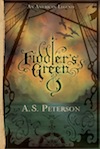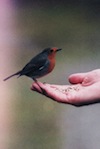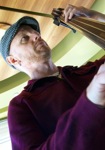
We drove an hour through clusters of adobe buildings to the college in Santa Fe. As we caught up on our lives over the past five years, I was paying attention to my friend, but also staring slightly slack-jawed at the Sangre de Cristo mountains as we pulled up to campus, fragrant with piñon, sage, juniper, and lavender — some of my favorite smells in the world. Those mountains were painted with hues of brown, gray, pink, orange; others in rich, brick red. The land offered a bleak, stark beauty; it cleansed the palette of my busy mind. Hummingbirds flitted about, and the New Mexico sky and clouds took my breath away.
 So, in order for me to think justly about my world, I have to know my world the way my Creator does — namely, that I belong to my world and it belongs to me. And I belong more immediately and vitally to my immediate surroundings. As it relates to people, justice is rooted in God’s desire for people. In my opinion, that desire is never general and statistical but always particular and personal. So if I am to live more justly and foster truth, goodness, and beauty, I must localize. I must know, personally and particularly, the place and the people to whom I’ve been given.
So, in order for me to think justly about my world, I have to know my world the way my Creator does — namely, that I belong to my world and it belongs to me. And I belong more immediately and vitally to my immediate surroundings. As it relates to people, justice is rooted in God’s desire for people. In my opinion, that desire is never general and statistical but always particular and personal. So if I am to live more justly and foster truth, goodness, and beauty, I must localize. I must know, personally and particularly, the place and the people to whom I’ve been given. So, in order for me to think justly about my world, I have to know my world the way my Creator does — namely, that I belong to my world and it belongs to me. And I belong more immediately and vitally to my immediate surroundings. As it relates to people, justice is rooted in God’s desire for people. In my opinion, that desire is never general and statistical but always particular and personal. So if I am to live more justly and foster truth, goodness, and beauty, I must localize. I must know, personally and particularly, the place and the people to whom I’ve been given.
So, in order for me to think justly about my world, I have to know my world the way my Creator does — namely, that I belong to my world and it belongs to me. And I belong more immediately and vitally to my immediate surroundings. As it relates to people, justice is rooted in God’s desire for people. In my opinion, that desire is never general and statistical but always particular and personal. So if I am to live more justly and foster truth, goodness, and beauty, I must localize. I must know, personally and particularly, the place and the people to whom I’ve been given.


























